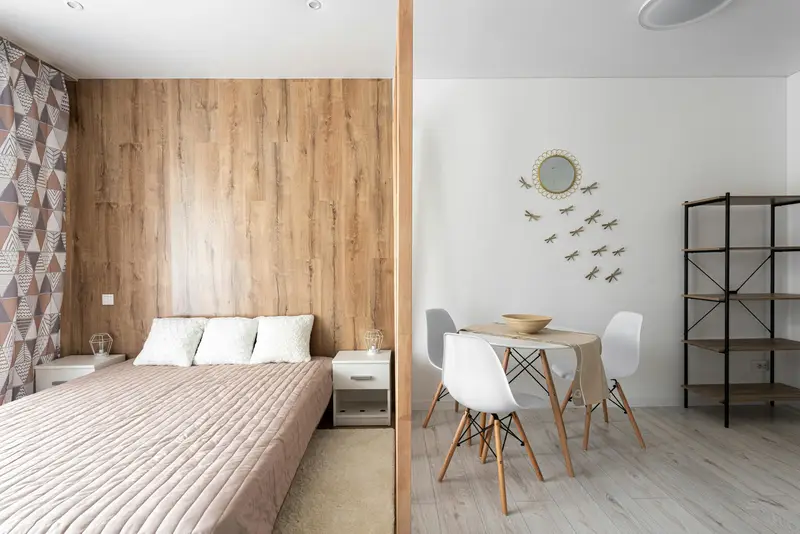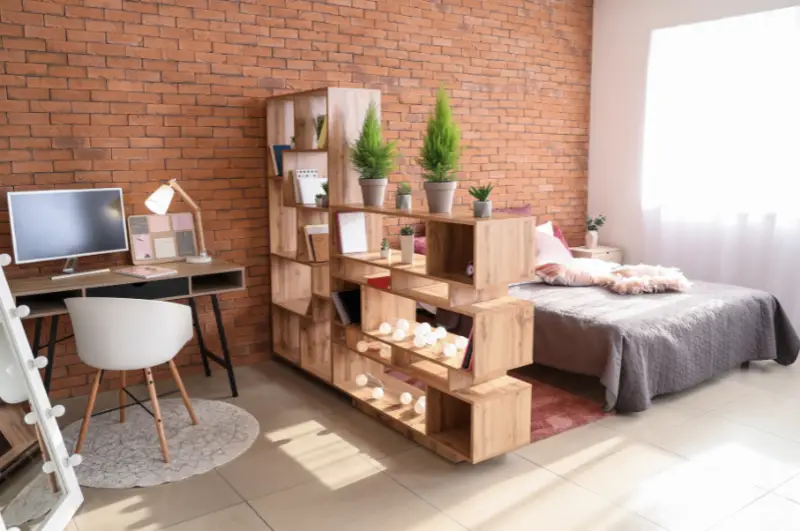“Sometimes less is more, but other times, it’s about getting creative with what you’ve got.” That’s something more and more people are saying these days, especially in fast-paced urban living. When space comes at a premium, flexibility in how you use that space is key. Enter the flex apartment. Whether you live in the heart of Houston, Dallas, Austin, or any bustling city, these versatile spaces are making waves in the real estate market.
But what exactly is a flex apartment, and why should you care? Here’s everything you need to know about these dynamic spaces—and more importantly, how they might just change the way you live.
What Exactly Is a Flex Apartment?
Let’s start with the basics. At its core, a flex apartment is an apartment that can be modified to add extra rooms or areas. Imagine having the power to convert a living room into a second bedroom or a home office with a few adjustments. That’s the beauty of flex living.

These units often come with open layouts, allowing you to add dividers or temporary walls, turning one large space into multiple functional rooms. You may have heard of a studio apartment with a temporary wall dividing the living and sleeping areas. That’s one example of a flex apartment, but the concept applies to larger apartments as well. A one-bedroom, for example, can be converted into a two-bedroom with the right setup.
The result? A place that adapts to your needs. Whether you’re downsizing or need a quick solution for your growing family, the flex apartment lets you make the space work for you.
This type of living arrangement is common in cities like New York but is gaining popularity in other urban centers like Houston and Dallas.
Flex Apartment vs. 1-Bedroom Apartment: What’s the Difference?
You might be wondering, how does a flex apartment differ from a standard 1-bedroom apartment? Good question.
A 1-bedroom apartment comes with one designated bedroom, period. No modification necessary. Everything is already sectioned off with solid walls. You’ve got your sleeping space, living area, and maybe even a tiny dining nook.
A flex apartment, on the other hand, is much more versatile. It may start as a large open floor plan, but with a few tweaks (like a temporary wall or bookshelf), you can split it into distinct areas. Need an office during the day and a guest bedroom at night? No problem.
The flex option gives you control over how your apartment functions, day by day, without the commitment of a 2-bedroom lease. For many people, that extra flexibility is worth its weight in gold.
The Pros and Cons of Flex Apartments
Every apartment has its trade-offs, and flex apartments are no exception. Understanding both the pros and cons will help you decide if this setup is right for you.
The Pros
- More space, less cost: One of the biggest advantages of a flex apartment is that it gives you more rooms without paying for a larger apartment. You can turn a one-bedroom into a two-bedroom or add an office, all while keeping costs low.
- Customizable layouts: Because you can decide how to arrange your apartment, you have the freedom to make the space your own. Move a divider here, put up a temporary wall there—every inch is up to you.
- Great for roommates: If you’re living with a friend or family member, splitting a flex apartment means each of you can have your own private space while sharing common areas. This makes it an affordable option for students and young professionals.
The Cons
- Smaller spaces: Adding extra walls or dividers means each room will naturally be smaller. If you’re someone who values wide, open spaces, a flex apartment might feel a little cramped once it’s sectioned off.
- Temporary solutions: The walls and dividers you use in a flex apartment aren’t permanent. While this allows for flexibility, it also means they won’t offer the same soundproofing or privacy as a regular wall.
- Not for everyone: If you love clearly defined rooms or need permanent solutions, a flex apartment might feel too temporary or makeshift.
Popular Uses for Flex Apartments
So, how do people typically use their flex apartments? The possibilities are almost endless.
- Home office: As remote work becomes the norm, many renters are using flex apartments to create home offices. Why work at the kitchen table when you can have a dedicated office space with just a bookshelf or a temporary wall?
- Extra bedroom: Whether it’s for a roommate, a guest, or even a growing family, many people convert part of their flex apartment into an additional bedroom. This is especially common in expensive cities where rent for a two-bedroom can be steep.
- Creative studio: Artists, writers, and creators love flex apartments for their versatility. They can easily convert part of their home into a studio without sacrificing living space.
How to Create Separation in a Flex Apartment
Now, let’s dive into the nuts and bolts of creating separate spaces within your flex apartment. The best part? You don’t need to be an interior designer to make it work.
Temporary Walls: A Solid Solution

The most common way to create separate spaces in a flex apartment is by installing a temporary wall. These walls are not part of the building’s foundation, so they’re easier to remove when you no longer need them. They look and feel like real walls, giving you that private bedroom feel.
Temporary walls can get pricey, depending on the material and installation, but they’re the best solution if you want to replicate the feeling of separate rooms. Just make sure to check with your landlord first to get the green light.
Bookshelves: Storage and Style

If you’re looking for something a bit more affordable and practical, using a bookshelf as a divider can be a great option. Not only does it create a visual barrier, but it also adds extra storage space for your books, decorations, and even clothes.
This option is popular among roommates and young professionals, as it’s easy to move and doesn’t require any installation. Plus, it adds a cozy, lived-in feel to your apartment.
Room Dividers: Quick and Easy
For the simplest solution, a room divider is a way to go. You can find foldable dividers at most furniture stores, and they’re easy to set up and take down whenever you need more space.
Room dividers come in various styles, from fabric screens to wood panels, so you can find one that matches your apartment’s aesthetic. However, they won’t give you the privacy or storage benefits that temporary walls or bookshelves provide.
Do You Actually Want to Live in a Flex Apartment?
Ultimately, whether a flex apartment is right for you comes down to your lifestyle. Do you crave flexibility and the ability to customize your living space? If so, this type of apartment could be perfect for you.
If you live in a city like Houston, Dallas, or Austin, where apartment sizes vary but rent can still be high, a flex apartment might help you save money without sacrificing too much space. It’s a cost-effective way to adapt your living space as your needs change.
However, if you prefer clearly defined rooms or need more permanent solutions, you might want to consider a more traditional apartment layout. Flex apartments work best for people who are adaptable and open to change.
Final Thoughts
Flex apartments are more than just a trend; they’re a solution for modern living. Whether you’re turning a studio into a cozy one-bedroom or splitting a large space into multiple rooms for roommates, a flex apartment offers you the chance to design your home according to your needs.
And with options available in bustling cities like Houston apartments, Dallas apartments, and Austin apartments, you can enjoy the flexibility and affordability that comes with this unique living setup.
Remember, the key to making a flex apartment work for you is creativity. Don’t be afraid to think outside the box (or walls!) when designing your space. The more you customize, the more at home you’ll feel.







